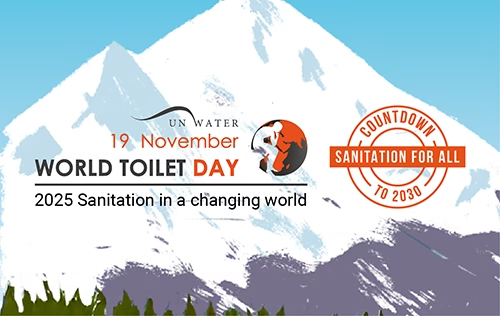The Importance of Safe Sanitation
Safe sanitation is a fundamental component of public health and human dignity. Access to proper sanitation facilities is essential for the prevention of disease transmission, maintenance of hygiene, and promotion of personal and communal well-being. In many parts of the world, inadequate sanitation continues to pose severe health risks, leading to waterborne diseases, malnutrition, and elevated mortality rates, particularly among vulnerable populations such as children and the elderly.
Toilets play a pivotal role in ensuring that human waste is managed effectively and safely. When communities lack access to adequate sanitation, open defecation becomes commonplace, leading to the contamination of water sources and the environment. This environmental degradation not only exacerbates health issues but also hampers economic development as it perpetuates cycles of poverty and illness. Moreover, the absence of safe sanitation facilities particularly limits the dignity of women and girls, who often face significant challenges, including safety concerns and social stigma, exacerbating gender inequalities.
As urbanization continues to rise globally, the demand for safe sanitation infrastructure is becoming increasingly urgent. Urban areas frequently experience high population densities, which create additional pressure on sanitation services. The development of effective sanitation systems in urban settings can mitigate health risks and contribute to sustainable cities by integrating environmentally friendly practices. Furthermore, the interconnections between sanitation, health, and climate change highlight the need for comprehensive measures that address all facets of public health while promoting environmental sustainability.
Ultimately, advancing sanitation access is not merely a matter of health; it is an issue of dignity and sustainable development. By prioritizing safe sanitation, communities can foster resilience against future health crises and work towards achieving broader developmental goals, ensuring that the right to health and dignity is upheld for all individuals.
The Consequences of Insufficient Sanitation
Insufficient sanitation is a pressing global challenge that has far-reaching consequences for health, the environment, and socio-economic well-being. The lack of safe sanitation facilities often leads to the contamination of drinking water sources, which poses severe health risks, particularly for vulnerable populations such as young children. Waterborne diseases, including cholera, dysentery, and typhoid fever, can thrive in environments where sanitation is inadequate. According to the World Health Organization (WHO), an estimated 829,000 deaths each year are caused by diarrheal diseases directly linked to inadequate water, sanitation, and hygiene. Children are particularly susceptible, with many falling victim to these life-threatening illnesses, ultimately affecting their growth and development.
The environmental implications of untreated waste are equally alarming. Inadequately managed sanitation efforts can lead to the pollution of ecosystems, affecting both terrestrial and aquatic life. Waste accumulation in open environments not only harms biodiversity but also contributes significantly to greenhouse gas emissions, particularly methane, which is produced by decomposing organic waste. This has substantial implications for climate change, highlighting the need for better waste management practices to mitigate these environmental risks. Protecting our ecosystems requires a robust approach to sanitation that prioritizes human health and environmental sustainability.
Moreover, the socio-economic consequences of insufficient sanitation are often overlooked yet profoundly impactful. Women and girls, in particular, bear the brunt of inadequate sanitation facilities. They are frequently subjected to unsafe and uncomfortable conditions that can deter them from pursuing education and employment opportunities. The absence of privacy and safety in sanitation significantly hinders their ability to participate in public life, perpetuating cycles of poverty and inequity. Addressing these challenges through improved sanitation infrastructure is essential, not only to promote health and environmental sustainability but also to empower women and girls in achieving their full potential.
Global Progress and Remaining Challenges
Over the past decade, significant strides have been made in enhancing sanitation facilities worldwide. An estimated 1.2 billion people have gained access to safe sanitation, highlighting a major achievement in public health and development. However, it is crucial to acknowledge that a substantial portion of the global population, approximately 2 billion people, still lacks access to these essential services. This discrepancy is influenced by various demographic factors, including geography, income levels, and the presence of disabilities.
Geographical disparities are especially pronounced, where rural areas often face greater challenges in accessing safe sanitation compared to urban regions. In many developing countries, inadequate infrastructure and limited resources impede progress. Income levels also play a pivotal role; individuals and communities with lower incomes frequently live in informal settlements that lack basic sanitation facilities. Furthermore, marginalized groups, including people with disabilities, face additional barriers in accessing necessary services, significantly affecting their overall health and dignity.
Additionally, climate change presents an ongoing challenge to the advancement of sanitation initiatives. Extreme weather events, such as floods and droughts, can damage existing sanitation infrastructure, rendering it ineffective and exposing vulnerable populations to health risks. Outdated infrastructure exacerbates this issue, as many sanitation systems are ill-equipped to handle the growing urban population and the demands of modern society. The interplay between rapid urbanization and deteriorating infrastructure requires concerted efforts to innovate and adapt to the evolving demands of sanitation needs.
To bridge the gap in access to safe sanitation, a multifaceted approach is essential. This includes investing in infrastructure, promoting inclusive policies, and addressing the socio-economic barriers that contribute to the persistent disparities in sanitation access globally. Understanding these challenges is vital to creating sustainable solutions that can ensure dignity and health for all individuals.
Innovative Solutions for the Future
As the global community prepares to observe World Toilet Day 2025, the necessity for innovative solutions in sanitation becomes increasingly clear. Access to adequate sanitation facilities is not merely a convenience; it is a fundamental human right vital for health, dignity, and overall quality of life. The urgent need for climate-resilient and low-emission toilets is paramount to successfully addressing the challenges posed by climate change and urbanization. Developing sanitation solutions that are sustainable, adaptable, and inclusive can significantly impact the health and well-being of diverse populations.
To achieve this, stakeholders must prioritize investments in research and development of new sanitation technologies. Approaches such as waste-to-energy systems, waterless toilets, and bio-based sanitation solutions offer promising pathways to mitigate environmental impact while meeting basic sanitation needs. These innovations can reduce greenhouse gas emissions, conserve natural resources, and improve resilience against climate variability, thus ensuring that vulnerable communities are not disproportionately affected by environmental changes.
Moreover, funding is critical in enabling the widespread implementation of these innovative sanitation solutions. Governments, international organizations, and private sector investors must collaborate to allocate resources effectively, targeting areas with the greatest need for improved sanitation access. Building public awareness and advocacy around the importance of adequate sanitation funding can further enhance the commitment to addressing this pressing issue.
In summary, investing in innovative sanitation technologies and ensuring adequate funding are essential steps toward advancing health and dignity for all. The challenges before us require urgent action to build future-ready sanitation solutions that not only adhere to climatological demands but also respect the rights of every individual. Ensuring equitable access to sanitation is an endeavor that merits our collective attention and action, as it remains a cornerstone of public health and human dignity.




